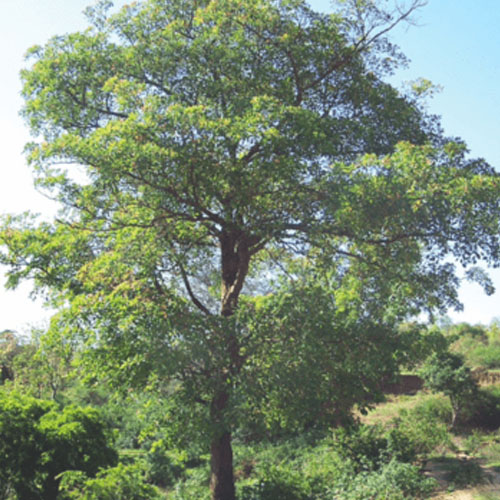Baheda Plants
Baheda, also known as Terminalia bellirica or Bahera, is a tree native to the Indian subcontinent and Southeast Asia. It is known for its medicinal properties, ecological benefits, and various uses in traditional practices.
Appearance
- Size and Structure: Baheda is a medium to large deciduous tree that can grow up to 15-30 meters (49-98 feet) tall. It has a broad, spreading canopy and a relatively straight trunk.
- Leaves: The leaves are large, ovate to elliptical, and have a smooth texture. They are dark green and arranged alternately along the branches. The leaves turn yellow before falling in the dry season.
- Flowers: The tree produces small, yellowish-green flowers that are clustered in spikes. The flowers are not very showy but are important for the tree’s reproduction.
- Fruit: Baheda bears round, woody fruits that are initially green and turn brown when mature. The fruit is covered with a hard, rough shell and contains a single seed. The fruit is used in traditional medicine.
Habitat
- Native Range: Baheda is native to tropical and subtropical regions of the Indian subcontinent, including India, Nepal, Bangladesh, and Sri Lanka. It is also found in parts of Southeast Asia.
- Growing Conditions: The tree prefers well-drained soil and full sun but can tolerate partial shade. It is adaptable to a range of soil types, including sandy, loamy, and clayey soils. Baheda is drought-tolerant and thrives in dry, arid climates.
Ecological Benefits
- Soil Conservation: The extensive root system of Baheda helps prevent soil erosion and improve soil structure.
- Wildlife Habitat: The tree provides habitat and food for various wildlife, including birds, insects, and small mammals. The fruit is eaten by some bird species.


